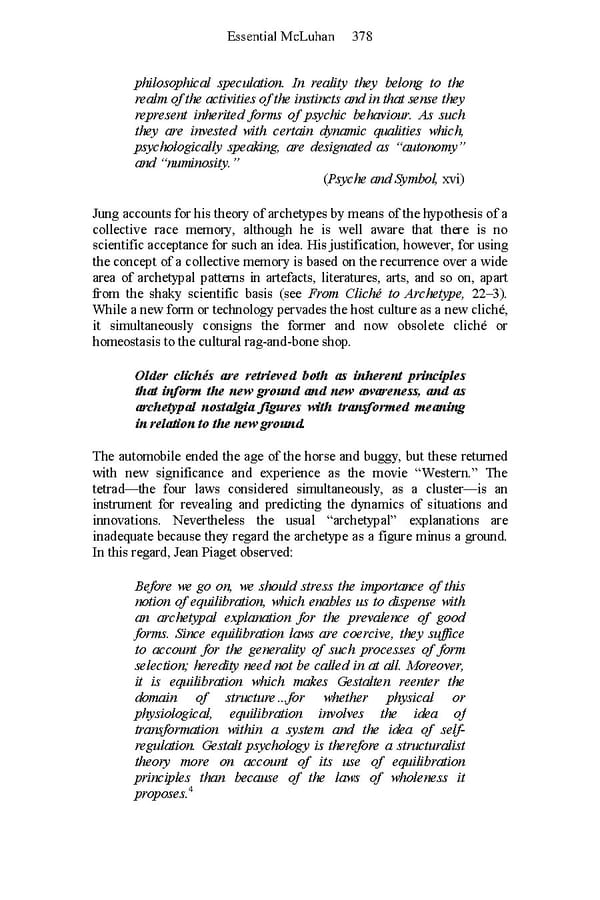Essential McLuhan 378 philosophical speculation. In reality they belong to the realm of the activities of the instincts and in that sense they represent inherited forms of psychic behaviour. As such they are invested with certain dynamic qualities which, psychologically speaking, are designated as “autonomy” and “numinosity.” (Psyche and Symbol, xvi) Jung accounts for his theory of archetypes by means of the hypothesis of a collective race memory, although he is well aware that there is no scientific acceptance for such an idea. His justification, however, for using the concept of a collective memory is based on the recurrence over a wide area of archetypal patterns in artefacts, literatures, arts, and so on, apart from the shaky scientific basis (see From Cliché to Archetype, 22–3). While a new form or technology pervades the host culture as a new cliché, it simultaneously consigns the former and now obsolete cliché or homeostasis to the cultural rag-and-bone shop. Older clichés are retrieved both as inherent principles that inform the new ground and new awareness, and as archetypal nostalgia figures with transformed meaning in relation to the new ground. The automobile ended the age of the horse and buggy, but these returned with new significance and experience as the movie “Western.” The tetrad—the four laws considered simultaneously, as a cluster—is an instrument for revealing and predicting the dynamics of situations and innovations. Nevertheless the usual “archetypal” explanations are inadequate because they regard the archetype as a figure minus a ground. In this regard, Jean Piaget observed: Before we go on, we should stress the importance of this notion of equilibration, which enables us to dispense with an archetypal explanation for the prevalence of good forms. Since equilibration laws are coercive, they suffice to account for the generality of such processes of form selection; heredity need not be called in at all. Moreover, it is equilibration which makes Gestalten reenter the domain of structure…for whether physical or physiological, equilibration involves the idea of transformation within a system and the idea of self- regulation. Gestalt psychology is therefore a structuralist theory more on account of its use of equilibration principles than because of the laws of wholeness it 4 proposes.
 Essential McLuhan Page 384 Page 386
Essential McLuhan Page 384 Page 386